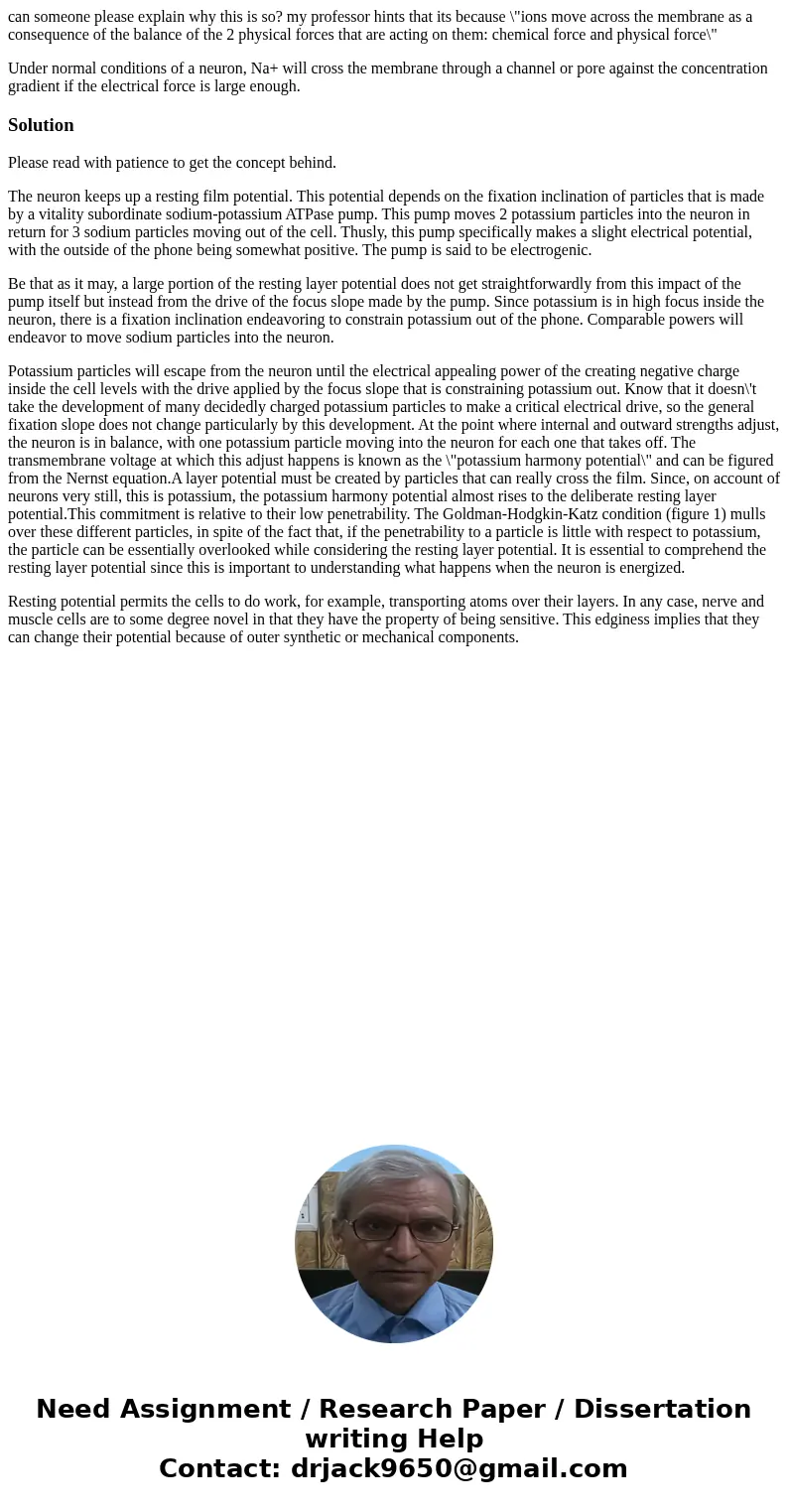can someone please explain why this is so my professor hints
can someone please explain why this is so? my professor hints that its because \"ions move across the membrane as a consequence of the balance of the 2 physical forces that are acting on them: chemical force and physical force\"
Under normal conditions of a neuron, Na+ will cross the membrane through a channel or pore against the concentration gradient if the electrical force is large enough.
Solution
Please read with patience to get the concept behind.
The neuron keeps up a resting film potential. This potential depends on the fixation inclination of particles that is made by a vitality subordinate sodium-potassium ATPase pump. This pump moves 2 potassium particles into the neuron in return for 3 sodium particles moving out of the cell. Thusly, this pump specifically makes a slight electrical potential, with the outside of the phone being somewhat positive. The pump is said to be electrogenic.
Be that as it may, a large portion of the resting layer potential does not get straightforwardly from this impact of the pump itself but instead from the drive of the focus slope made by the pump. Since potassium is in high focus inside the neuron, there is a fixation inclination endeavoring to constrain potassium out of the phone. Comparable powers will endeavor to move sodium particles into the neuron.
Potassium particles will escape from the neuron until the electrical appealing power of the creating negative charge inside the cell levels with the drive applied by the focus slope that is constraining potassium out. Know that it doesn\'t take the development of many decidedly charged potassium particles to make a critical electrical drive, so the general fixation slope does not change particularly by this development. At the point where internal and outward strengths adjust, the neuron is in balance, with one potassium particle moving into the neuron for each one that takes off. The transmembrane voltage at which this adjust happens is known as the \"potassium harmony potential\" and can be figured from the Nernst equation.A layer potential must be created by particles that can really cross the film. Since, on account of neurons very still, this is potassium, the potassium harmony potential almost rises to the deliberate resting layer potential.This commitment is relative to their low penetrability. The Goldman-Hodgkin-Katz condition (figure 1) mulls over these different particles, in spite of the fact that, if the penetrability to a particle is little with respect to potassium, the particle can be essentially overlooked while considering the resting layer potential. It is essential to comprehend the resting layer potential since this is important to understanding what happens when the neuron is energized.
Resting potential permits the cells to do work, for example, transporting atoms over their layers. In any case, nerve and muscle cells are to some degree novel in that they have the property of being sensitive. This edginess implies that they can change their potential because of outer synthetic or mechanical components.

 Homework Sourse
Homework Sourse